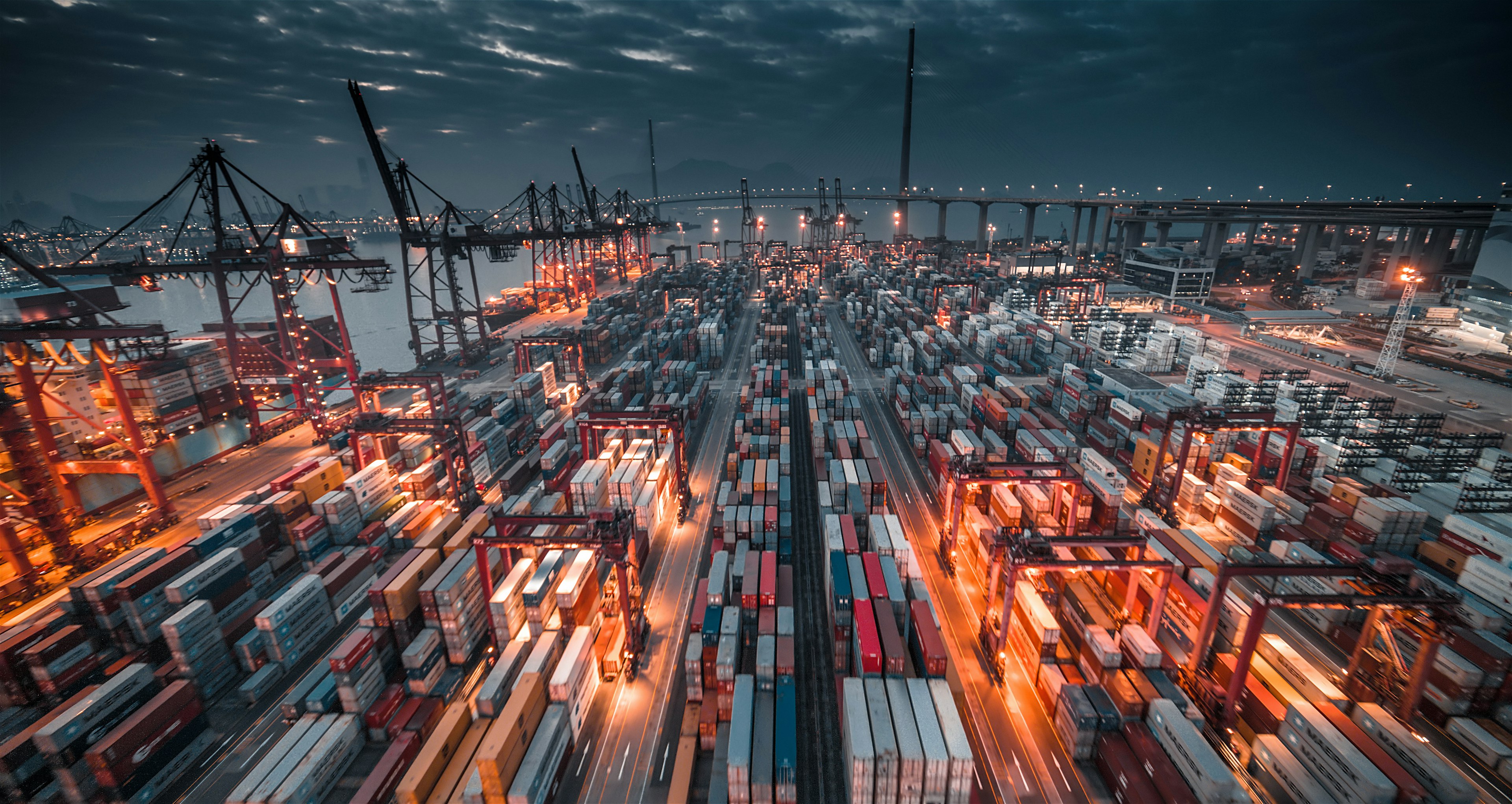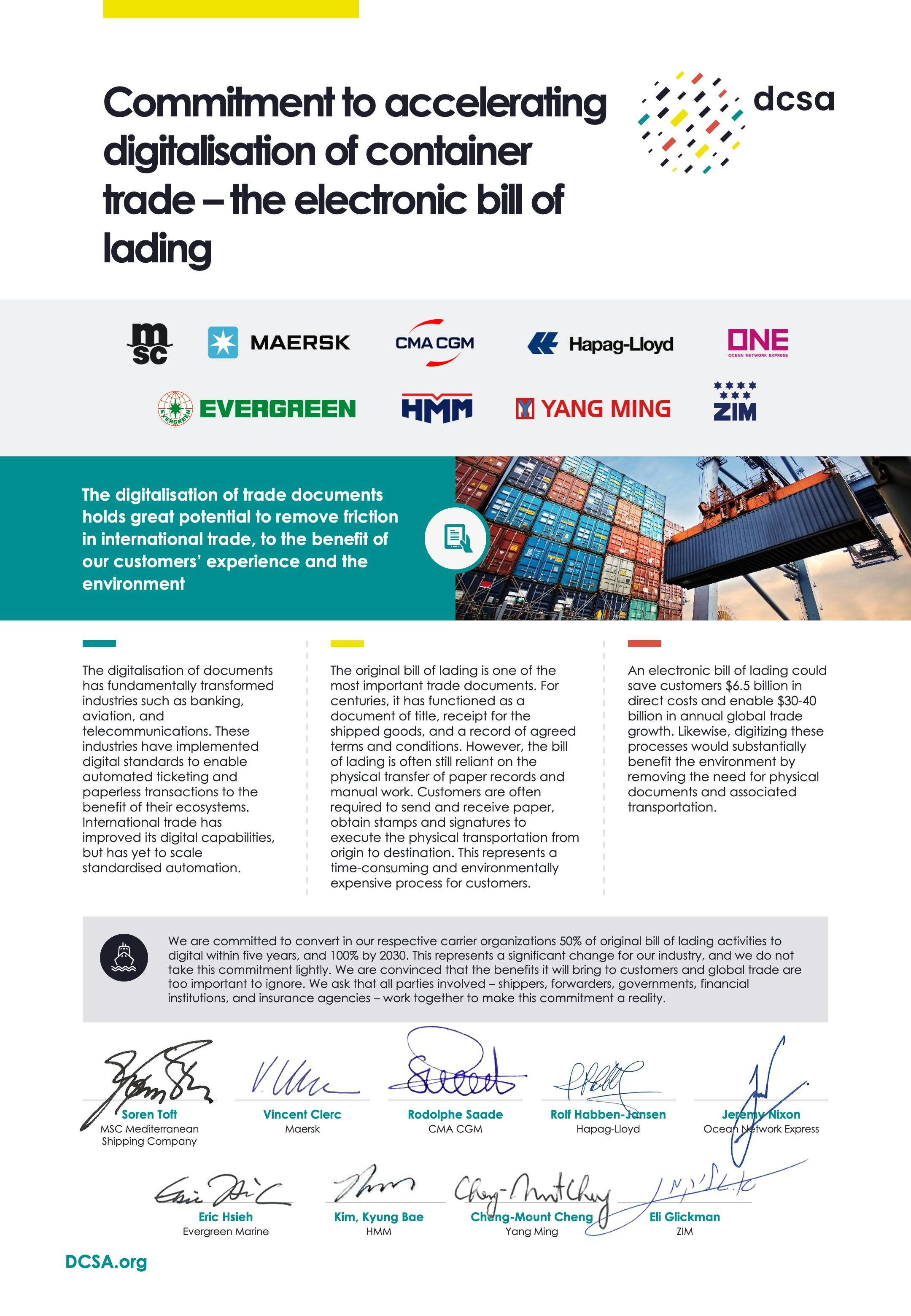100% eBL by 2030
Initiative

DCSA's Digital Trade Initiative
Achieving universal eBL (a standardised electronic Bill of Lading) is a cornerstone of DCSA’s mission to make container shipping services efficient, reliable, easy to use, secure and sustainable.
DCSA collaborates with its ocean carrier members and other industry stakeholders to develop digital standards and drive necessary changes that enable end-to-end digitalisation of the container trade documentation process for all stakeholders. The ultimate aim is paperless international trade, starting with a secure, standardised eBL.
The commitment from DCSA member carriers
To accelerate the growth of digital trade, the CEOs of all DCSA member carriers have signed a commitment to the industry to issue 50% of their bills of lading digitally within 5 years and 100% by 2030. This is a meaningful step towards removing trade friction, improving the customer experience and increasing the sustainability of container shipping.
Relevant links
Thomas Bagge, Chief Executive Officer, DCSA
“The digitalisation of international trade holds vast potential for the world economy by reducing friction and, as trade brings prosperity and the eBL will further enable trade, helping bring millions out of poverty. This heralds the start of a new era in container shipping as the industry transitions to scaled automation and fully paperless trade. Document digitalisation has the power to transform international trade and requires collaboration from all stakeholders. I applaud the leadership of our members in coming together to achieve this important milestone.”
